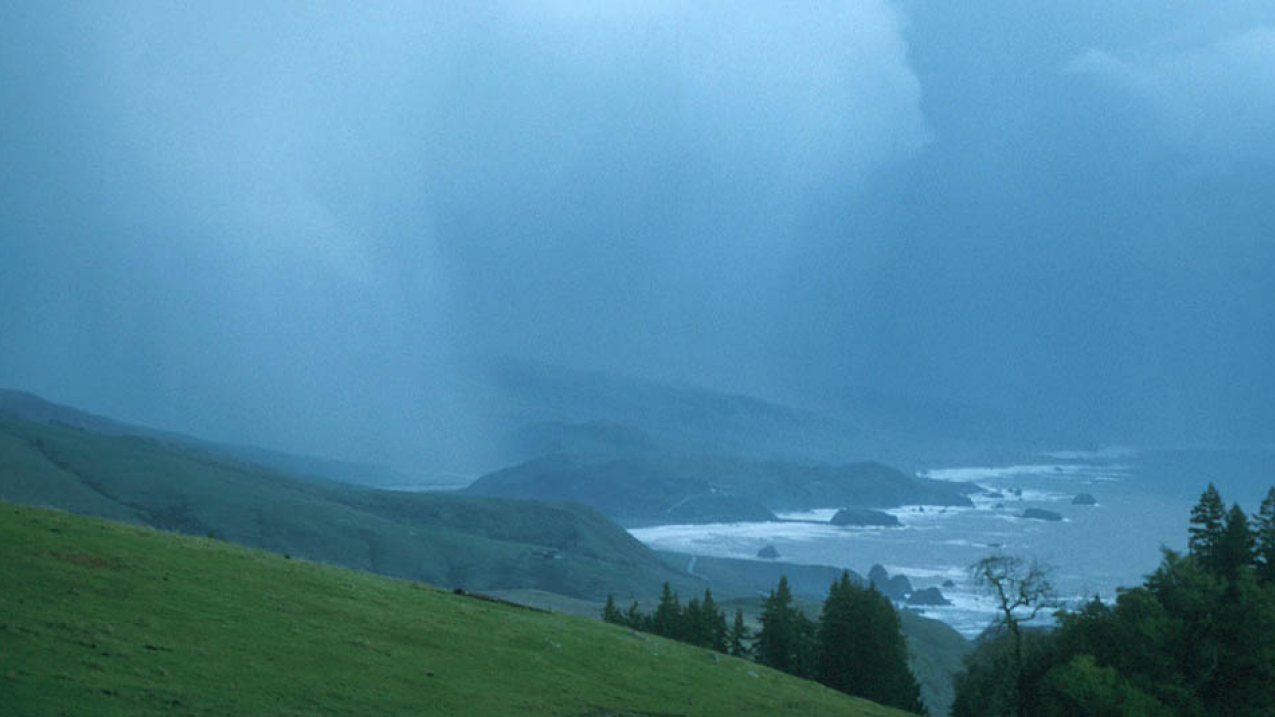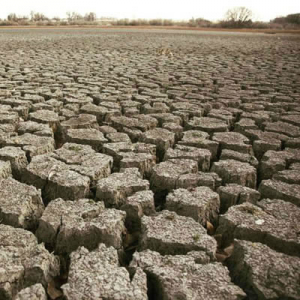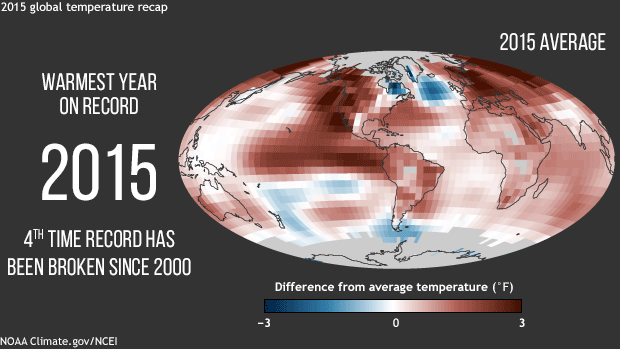
A storm darkens the sky at the mouth of the Russian River, north of Bodega Bay, Calif. Weather can change from minute-to-minute, hour-to-hour, day-to-day, and season-to-season. Climate, is the average of weather over time and space. (Image credit: NOAA)
What’s the difference between climate and weather?
How is weather different from climate?
How does weather data become climate data?
What is the difference between climate change and global warming?
Weather is what you experience when you step outside on any given day. In other words, it is the state of the atmosphere at a particular location over the short-term. Climate is the average of the weather patterns in a location over a longer period of time, usually 30 years or more.
If you’ve ever heard your local weathercaster say, “We just hit a record high for this day,” he or she is comparing the day’s weather with your location’s climate.
Death Valley, Calif. hits 134
degrees F in 1913, setting U.S. record
Weather can change quickly, from one moment to the next and over short distances. It can be raining one minute, and snowing the next. It can be pouring on one side of town and sunny on the other.

Climate, on the other hand, changes more slowly. That’s why we come to expect, for example, that the Northeast will be cold and snowy in January and that the South will be hot and humid in July. Also, climate generally doesn’t vary much over short distances, except in the mountains.
Part of NOAA’s mission is to build a Weather-Ready Nation—ensuring communities and businesses are prepared to for extreme weather, water, and climate-related events.
Whether it’s a hurricane, a crippling snowstorm, or a multi-year drought, weather and climate affect communities and businesses across the United States. NOAA’s National Weather Service is the nation’s lead forecasting agency, its first line of defense to ensure Americans can take steps to protect life and property.
NOAA’s NWS provides around-the-clock service to every American through our network of 122 local weather forecast offices and numerous regional centers that keep tabs on weather, fire, river, coast and ocean conditions. Our forecasters rely on a network of radars, satellites, ocean buoys, weather balloons, other observations, and supercomputers to provide timely, accurate, and reliable forecasts. They also issue critical watches and warnings before extreme weather strikes.
Dating back to the last centuries, NOAA and other scientific organizations have established networks of weather-observing stations across the country and around the world.
Climate is about the long term. It’s about using the weather data we collected in the past to look for long-term trends of 30 years or more. It also about applying the best science we have today to predict changes that may occur in the ocean and atmosphere in the future.
Climate is what you expect,
weather is what you get
Worldwide, scientists observe weather conditions at thousands of stations every day of the year. Some observations are made hourly, others just once a day. Over time, these observations allow us to define what’s normal at each location. Scientists calculate averages of daily weather conditions, such as average temperature, precipitation, humidity, and wind speed, to describe climate.

When scientists talk about climate, they’re talking about the averages of measureable things like land or sea temperature, amount of rainfall, date of the first frost, amount of sea ice melt, or sea level, etc. often over long timespans of 30 years or more.
In many locations around the United States, weather and climate records have been kept for more than 140 years. NOAA is involved in a long-term effort to collect, quality control, and organize data to make it available to the public online. These long-term records enable scientists to detect climate patterns and trends.
Climate datasets also allow scientists to generate climate data products, including graphics, maps, and reports such as the monthly or annual State of the Climate reports. These data also serve as input for computer models to help generate climate outlooks and weather forecasts.
The terms climate change and global warming are often used interchangeably. Is there a difference between the two? To scientists there is, but in general, everyday conversation, people use both.
2015 was the warmest year on record for Earth, a record that dates back to 1880.
Climate change refers to any significant change in the measures of climate for extended periods of time, usually over decades or longer. This includes major, long-term changes in temperature, precipitation, humidity, ocean heat, wind patterns, sea level, sea ice extent, and other factors, and how these changes affect life on Earth.
Climate change results from both human activities and natural causes. Human activities include the emission of heat-trapping greenhouse gases, such as carbon dioxide, into the atmosphere and changes in land-use patterns, such as agriculture and urbanization. Natural causes range from regular pattern shifts in the dynamics of our oceans and atmosphere, such as El Niño/ La Niña, to volcanic eruptions that emit various gasses and aerosols in the atmosphere, to long-term changes in the Earth’s orbit around the sun, to variations in the amount of energy from the Sun that reaches Earth.

Global warming is one aspect of climate change. Specifically, it relates to the recent and ongoing rise in global average temperatures near Earth’s surface (land, ocean or both). Over the last 50 years, global warming has primarily been due to the increase of heat-trapping pollutants, called greenhouse gases, that humans are adding to the atmosphere primarily by burning fossil fuels. The current increase in global average temperature appears to be occurring much faster than at any point in the last 11,000 years. Global warming is causing climate patterns to change. However, it is only one aspect of climate change.
Generally, when scientists talk about global warming, they almost always mean human-caused warming: warming due to the rapid increase of carbon dioxide and other heat-trapping gases in the atmosphere from people burning coal, oil, and gas, and from land uses, such as agriculture or urbanization.
Today’s global warming is an unprecedented type of climate change and is causing a number of side effects to our planet. These changes, from sea level rise to melting mountain glaciers to prolonged droughts, will likely have a much greater impact on society as a whole than temperature change alone.
For more information, see the Climate.gov post “What’s the difference between global warming and climate change?”
To learn more about climate change in the United States, visit the latest National Climate Assessment. Browse the U.S. Climate Resilience Toolkit to learn how to understand and address climate issues that impact people and their communities.
Weather is what you experience when you step outside on any given day. In other words, it is the state of the atmosphere at a particular location over the short-term. Climate is the average of the weather patterns in a location over a longer period of time, usually 30 years or more.
If you’ve ever heard your local weathercaster say, “We just hit a record high for this day,” he or she is comparing the day’s weather with your location’s climate.
Death Valley, Calif. hits 134
degrees F in 1913, setting U.S. record
Weather can change quickly, from one moment to the next and over short distances. It can be raining one minute, and snowing the next. It can be pouring on one side of town and sunny on the other.

Climate, on the other hand, changes more slowly. That’s why we come to expect, for example, that the Northeast will be cold and snowy in January and that the South will be hot and humid in July. Also, climate generally doesn’t vary much over short distances, except in the mountains.
Part of NOAA’s mission is to build a Weather-Ready Nation—ensuring communities and businesses are prepared to for extreme weather, water, and climate-related events.
Whether it’s a hurricane, a crippling snowstorm, or a multi-year drought, weather and climate affect communities and businesses across the United States. NOAA’s National Weather Service is the nation’s lead forecasting agency, its first line of defense to ensure Americans can take steps to protect life and property.
NOAA’s NWS provides around-the-clock service to every American through our network of 122 local weather forecast offices and numerous regional centers that keep tabs on weather, fire, river, coast and ocean conditions. Our forecasters rely on a network of radars, satellites, ocean buoys, weather balloons, other observations, and supercomputers to provide timely, accurate, and reliable forecasts. They also issue critical watches and warnings before extreme weather strikes.
Dating back to the last centuries, NOAA and other scientific organizations have established networks of weather-observing stations across the country and around the world.
Climate is about the long term. It’s about using the weather data we collected in the past to look for long-term trends of 30 years or more. It also about applying the best science we have today to predict changes that may occur in the ocean and atmosphere in the future.
Climate is what you expect,
weather is what you get
Worldwide, scientists observe weather conditions at thousands of stations every day of the year. Some observations are made hourly, others just once a day. Over time, these observations allow us to define what’s normal at each location. Scientists calculate averages of daily weather conditions, such as average temperature, precipitation, humidity, and wind speed, to describe climate.

When scientists talk about climate, they’re talking about the averages of measureable things like land or sea temperature, amount of rainfall, date of the first frost, amount of sea ice melt, or sea level, etc. often over long timespans of 30 years or more.
In many locations around the United States, weather and climate records have been kept for more than 140 years. NOAA is involved in a long-term effort to collect, quality control, and organize data to make it available to the public online. These long-term records enable scientists to detect climate patterns and trends.
Climate datasets also allow scientists to generate climate data products, including graphics, maps, and reports such as the monthly or annual State of the Climate reports. These data also serve as input for computer models to help generate climate outlooks and weather forecasts.
The terms climate change and global warming are often used interchangeably. Is there a difference between the two? To scientists there is, but in general, everyday conversation, people use both.
2015 was the warmest year on record for Earth, a record that dates back to 1880.
Climate change refers to any significant change in the measures of climate for extended periods of time, usually over decades or longer. This includes major, long-term changes in temperature, precipitation, humidity, ocean heat, wind patterns, sea level, sea ice extent, and other factors, and how these changes affect life on Earth.
Climate change results from both human activities and natural causes. Human activities include the emission of heat-trapping greenhouse gases, such as carbon dioxide, into the atmosphere and changes in land-use patterns, such as agriculture and urbanization. Natural causes range from regular pattern shifts in the dynamics of our oceans and atmosphere, such as El Niño/ La Niña, to volcanic eruptions that emit various gasses and aerosols in the atmosphere, to long-term changes in the Earth’s orbit around the sun, to variations in the amount of energy from the Sun that reaches Earth.

Global warming is one aspect of climate change. Specifically, it relates to the recent and ongoing rise in global average temperatures near Earth’s surface (land, ocean or both). Over the last 50 years, global warming has primarily been due to the increase of heat-trapping pollutants, called greenhouse gases, that humans are adding to the atmosphere primarily by burning fossil fuels. The current increase in global average temperature appears to be occurring much faster than at any point in the last 11,000 years. Global warming is causing climate patterns to change. However, it is only one aspect of climate change.
Generally, when scientists talk about global warming, they almost always mean human-caused warming: warming due to the rapid increase of carbon dioxide and other heat-trapping gases in the atmosphere from people burning coal, oil, and gas, and from land uses, such as agriculture or urbanization.
Today’s global warming is an unprecedented type of climate change and is causing a number of side effects to our planet. These changes, from sea level rise to melting mountain glaciers to prolonged droughts, will likely have a much greater impact on society as a whole than temperature change alone.
For more information, see the Climate.gov post “What’s the difference between global warming and climate change?”
To learn more about climate change in the United States, visit the latest National Climate Assessment. Browse the U.S. Climate Resilience Toolkit to learn how to understand and address climate issues that impact people and their communities.


